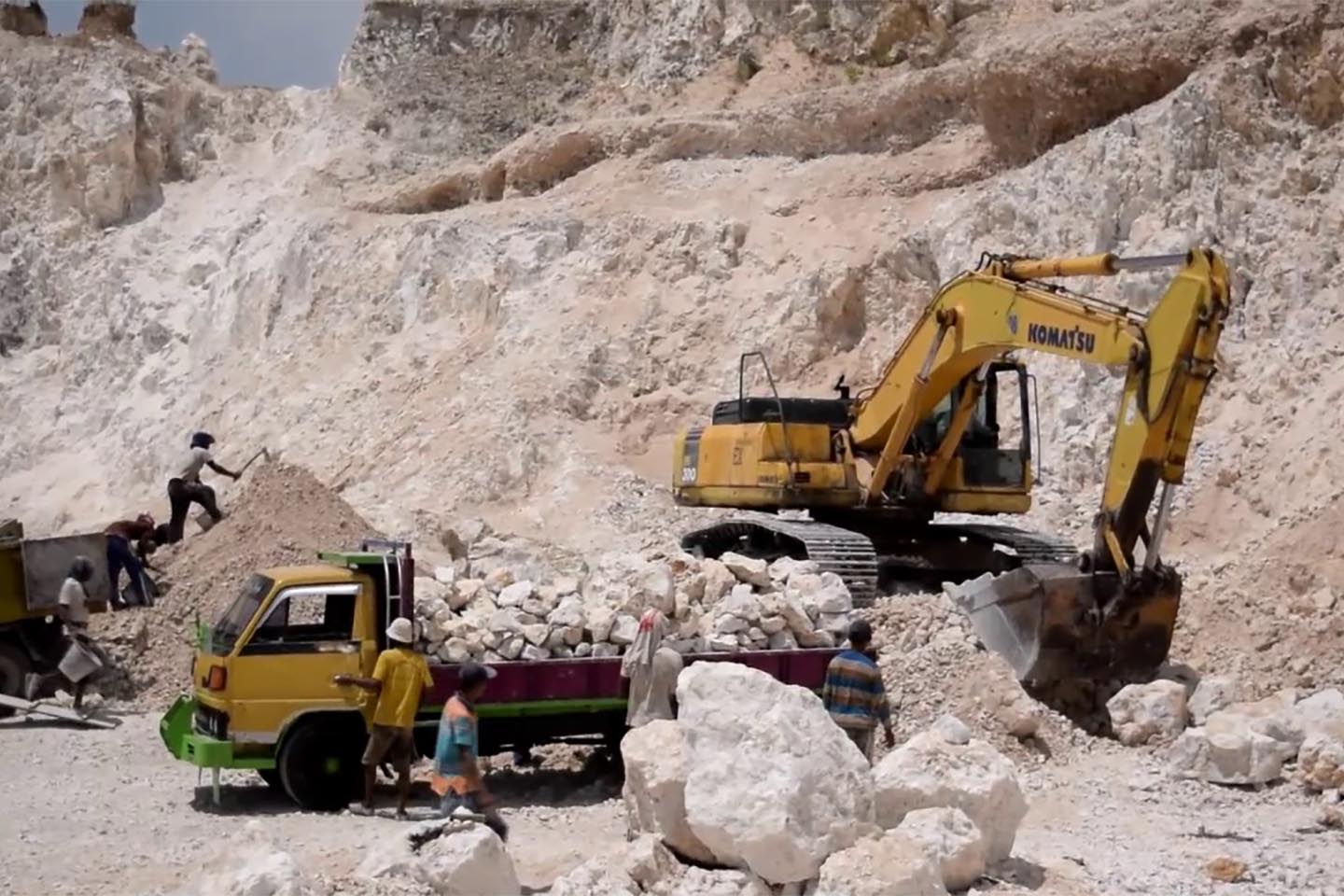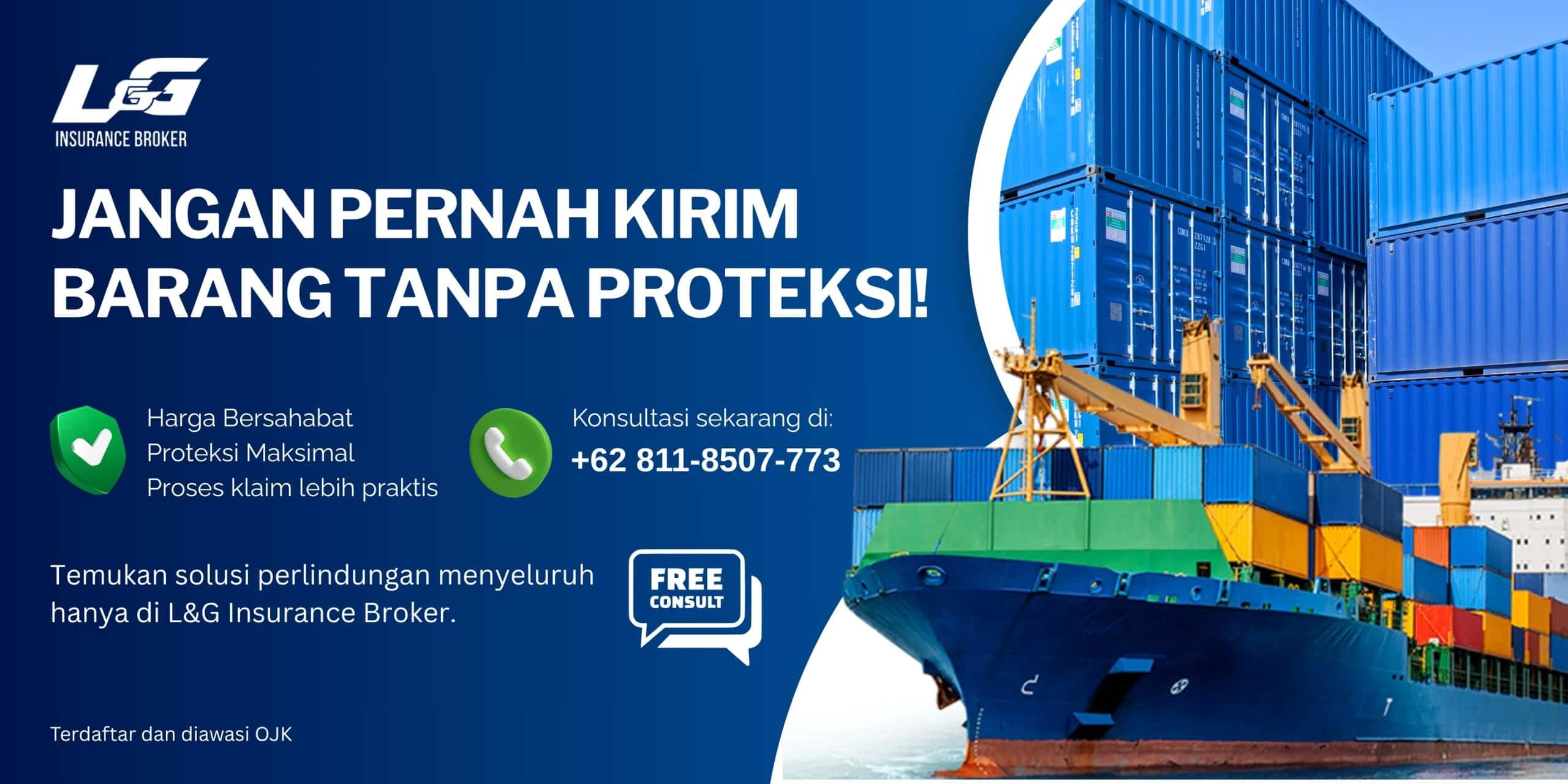Liga Asuransi – Dear esteemed Risk Managers and Risk Takers,
In the dynamic world of business, navigating risks is not just a challenge; it’s an opportunity to excel. As the guardians of your organization’s resilience and prosperity, your role is paramount in safeguarding against unforeseen challenges and seizing every chance for growth. That’s why we invite you to embark on a journey with us through the realm of risk management and insurance—a journey that promises insights, solutions, and empowerment.
In this article, we delve into the intricate world of insurance for various industries, offering invaluable perspectives and strategies tailored to your needs. Whether you’re steering through the turbulent seas of marine cargo, traversing the rugged terrain of mineral transportation, or charting a course through the ever-changing landscape of energy logistics, we’re here to guide you every step of the way.
So, to all the Risk Managers and Risk Takers out there, we invite you to join us on this enlightening expedition. Read, learn, and share these insights with your peers, because together, we can conquer uncertainties and unlock new possibilities for success.
UNDERSTANDING THE LIMESTONE INDUSTRY IN INDONESIA
In Indonesia, limestone holds significant importance across various industries and construction projects, contributing to economic development, infrastructure enhancement, and environmental sustainability. This versatile material is a cornerstone of the construction industry, where it is extensively used for its durability, versatility, and aesthetic appeal. Limestone serves as a primary ingredient in the production of cement, concrete, and aggregates, supporting the construction of buildings, roads, bridges, ports, and other infrastructure projects throughout the country.
THE USERS OF LIMESTONE PRODUCTS
Limestone serves as a critical raw material in diverse manufacturing processes across several industries, including steel, glass, ceramics, pulp and paper, and chemicals. Here’s a closer look at its applications:
Steel Industry
In the steelmaking process, limestone acts as a fluxing agent, helping to remove impurities such as silica, alumina, and phosphorus from the iron ore.
When limestone is added to the blast furnace, it reacts with impurities to form slag, which can be easily removed, resulting in cleaner and higher-quality steel.
Glass Manufacturing
Limestone is utilized as a flux in glass manufacturing to lower the melting point of silica sand, the primary raw material for glass production.
By reducing the melting temperature, limestone facilitates the melting of silica sand and other raw materials, enabling efficient glass formation and shaping.
Ceramics Industry
In the ceramics industry, limestone is used as a fluxing agent in the production of ceramic materials such as bricks, tiles, and pottery.
It helps to lower the firing temperature of ceramic products, improve their mechanical properties, and enhance the durability and aesthetic appeal of finished ceramics.
Pulp and Paper Production
Limestone is employed in the pulp and paper industry for its alkaline properties, which are essential for papermaking processes.
It is added to the pulping process as a pulping agent or filler to adjust pH levels, enhance pulp bleaching efficiency, and improve paper quality and brightness.
Chemical Manufacturing
Limestone serves as a raw material and chemical feedstock in various chemical manufacturing processes, including the production of calcium carbonate, lime, and other chemicals.
Calcium carbonate derived from limestone is used in the manufacture of a wide range of products, including paints, plastics, rubber, adhesives, and pharmaceuticals.
TYPES OF TRANSPORTATION MODE
Limestone, being a crucial raw material in various industries, is transported using different modes of transportation tailored to specific needs and logistics. Here’s a discussion of the various transportation modes commonly used for limestone:
Trucks
- Trucking is a common and flexible mode of transportation for limestone, especially for short to medium distances.
- Trucks can access remote quarry sites and deliver limestone directly to construction sites, processing plants, or distribution centers.
- This mode offers relatively quick turnaround times and the ability to transport smaller quantities of limestone on demand.
Railroads
- Rail transport is widely utilized for long-distance haulage of limestone from quarries to industrial hubs, processing facilities, or coastal ports.
- Railroads provide cost-effective and efficient transportation options for bulk shipments of limestone, offering larger capacity than trucks and reducing road congestion.
- Specialized hopper cars or gondolas are often used to transport bulk limestone, ensuring efficient loading, transportation, and unloading processes.
Maritime Vessels
- Maritime transport is essential for transporting limestone over long distances, especially for international trade and large-scale shipments.
- Bulk carriers, barges, and ships equipped with bulk handling facilities are commonly used to transport limestone via inland waterways, coastal routes, or across oceans.
- Limestone is typically loaded onto vessels at dedicated terminals or port facilities using conveyor systems or loading equipment, ensuring efficient handling and logistics.
Conveyor Belts
- Conveyor belts are employed for in-pit or overland transportation of limestone within mining operations or from quarries to processing plants.
- Conveyor systems offer continuous and automated transport of limestone, minimizing manual handling, reducing labor costs, and improving operational efficiency.
- They can be customized to accommodate varying distances, inclines, and terrains, providing a reliable and cost-effective solution for bulk material handling.
CHALLENGES IN LIMESTONE TRANSPORTATION
Transporting limestone poses several challenges and requires careful consideration of various factors to ensure efficient and reliable logistics. Here are some key challenges and considerations in limestone transportation:
Distance and Accessibility
- Limestone quarries may be located in remote or geographically challenging areas, necessitating long-distance transportation to reach processing plants, distribution centers, or end-users.
- Accessibility issues such as rugged terrain, narrow roads, or limited infrastructure can pose challenges for transporting heavy limestone materials, requiring specialized equipment and logistics planning.
Logistics and Route Planning
- Effective route planning is essential to optimize transportation efficiency, minimize transit times, and reduce fuel consumption and emissions.
- Identifying the most cost-effective and environmentally sustainable transportation routes involves considering factors such as road conditions, traffic congestion, tolls, and regulatory restrictions.
Handling and Storage Requirements
- Limestone is a bulk material that requires proper handling and storage to prevent degradation, contamination, or loss during transportation.
- Dust control measures, spillage prevention systems, and secure packaging are essential to maintain the quality and integrity of limestone cargo throughout the transportation process.
Environmental Impact
- Limestone transportation activities can have environmental implications, including air and noise pollution, habitat disruption, and landscape alteration.
- Mitigating environmental impact requires implementing sustainable transportation practices, such as using low-emission vehicles, minimizing disturbance to sensitive ecosystems, and adhering to environmental regulations.
Safety and Security
- Ensuring the safety and security of limestone transportation operations is paramount to protect personnel, equipment, and cargo from accidents, theft, vandalism, or sabotage.
- Compliance with safety regulations, training programs for drivers and operators, and implementing security measures such as surveillance systems and cargo tracking technologies are critical considerations.
THE RISK ASSOCIATED WITH LIMESTONE TRANSPORTATION
Transporting limestone involves various risks that can impact safety, environmental integrity, and operational efficiency. Here’s an overview of the risks associated with limestone transportation:
Cargo Damage
- Limestone cargo is susceptible to damage during loading, unloading, and transit, leading to material loss, degradation, or contamination.
- Improper handling, inadequate packaging, and insufficient securing of cargo can result in spillage, breakage, or compaction of limestone, affecting product quality and value.
Accidents
- Accidents such as collisions, rollovers, or vehicle breakdowns can occur during limestone transportation, resulting in property damage, injuries, or fatalities.
- Factors contributing to accidents include adverse weather conditions, road hazards, driver fatigue, mechanical failures, and inadequate vehicle maintenance.
Environmental Hazards
- Spills or leaks of limestone during transportation can pose environmental hazards, especially if they occur near water bodies, sensitive ecosystems, or populated areas.
- Limestone dust emissions from transportation activities can contribute to air pollution, respiratory health issues, and environmental degradation, particularly in densely populated or urban areas.
Regulatory Liabilities
- Non-compliance with transportation regulations, permits, and environmental standards can lead to regulatory liabilities, fines, penalties, and legal consequences.
- Failure to adhere to vehicle weight limits, road safety regulations, emission standards, or hazardous materials transportation requirements can result in enforcement actions by regulatory authorities.
Infrastructure Challenges
- Inadequate infrastructure, such as poorly maintained roads, bridges, or transportation networks, can pose challenges for limestone transportation, leading to delays, detours, or disruptions.
- Limited access to transportation facilities, loading docks, or storage yards may hinder efficient logistics and increase transportation costs.
Theft and Vandalism
- Limestone transportation operations may be vulnerable to theft, vandalism, or sabotage, particularly in remote or unsecured areas.
- Theft of limestone cargo, equipment, or fuel, as well as damage to vehicles or infrastructure, can result in financial losses, operational disruptions, and security concerns.
Mitigating these risks requires implementing comprehensive risk management strategies, including:
- Conducting thorough risk assessments and hazard analyses to identify potential risks and vulnerabilities in limestone transportation operations.
- Developing and implementing safety protocols, training programs, and emergency response plans to mitigate the likelihood and impact of accidents, spills, or environmental incidents.
- Investing in proper equipment, packaging, and handling procedures to minimize cargo damage and ensure product integrity during transportation.
- Complying with transportation regulations, environmental standards, and industry best practices to avoid regulatory liabilities and maintain legal compliance.
- Enhancing security measures, surveillance systems, and tracking technologies to prevent theft, vandalism, and unauthorized access to limestone transportation assets and facilities.
By proactively addressing these risks and implementing effective risk mitigation measures, stakeholders can enhance the safety, reliability, and sustainability of limestone transportation operations while minimizing potential liabilities and disruptions.
TYPES OF INSURANCE NEEDED
Insurance coverage options for limestone transportation are essential to protect against various risks and liabilities associated with the movement of cargo and operations. Here are some key insurance coverage options:
- Cargo insurance provides coverage for loss or damage to limestone cargo during transportation, including loading, transit, and unloading.
- This coverage protects against risks such as theft, vandalism, accidents, natural disasters, and cargo contamination.
- Marine insurance offers coverage specifically tailored to risks associated with maritime transportation of limestone, whether via sea vessels or inland waterways.
- It includes protection against vessel accidents, cargo spills, collisions, grounding, sinking, and other maritime perils.
Transit Insurance
- Transit insurance provides coverage for risks associated with inland transportation of limestone, including by trucks, railroads, or pipelines.
- This coverage safeguards against accidents, theft, damage, and other perils that may occur during overland transit.
- Liability insurance protects against legal liabilities arising from limestone transportation operations, including third-party bodily injury, property damage, or environmental pollution.
- It includes coverage for legal defense costs, settlement payments, and court-ordered judgments in liability claims.
Pollution Liability Insurance
- Pollution liability insurance offers coverage for environmental damage, cleanup costs, and third-party claims resulting from pollution or contamination incidents during limestone transportation.
- This coverage is essential to address potential liabilities arising from spills, leaks, or releases of limestone dust, chemicals, or hazardous materials.
Equipment and Property Insurance
- Equipment and property insurance offers coverage for physical damage or loss to vehicles, machinery, equipment, facilities, and infrastructure used in limestone transportation.
- This coverage protects against risks such as theft, fire, vandalism, accidental damage, or natural disasters.
- General liability insurance provides broad coverage for various third-party liabilities arising from limestone transportation activities, including bodily injury, property damage, personal injury, and advertising liability.
- It offers protection against lawsuits, legal defense costs, and settlements arising from covered claims.
THE IMPORTANCE OF USING INSURANCE BROKER
Using an insurance broker is crucial for businesses involved in limestone transportation for several reasons:
Expertise and Guidance
- Insurance brokers possess specialized knowledge and expertise in the insurance industry, including coverage options, regulations, and risk management strategies.
- They can provide valuable guidance and advice to businesses in selecting the most appropriate insurance policies tailored to their specific needs and risks.
Access to Multiple Insurers
- Insurance brokers have access to a wide network of insurance providers, including leading carriers, niche insurers, and specialty underwriters.
- They can leverage their relationships and market connections to obtain competitive quotes, negotiate favorable terms, and secure comprehensive coverage options for their clients.
Customized Solutions
- Insurance brokers work closely with clients to understand their unique business operations, risks, and insurance requirements.
- They can tailor insurance solutions to address specific needs and exposures, ensuring adequate protection against potential losses and liabilities associated with limestone transportation.
Risk Assessment and Management
- Insurance brokers conduct thorough risk assessments and analyses to identify potential risks, vulnerabilities, and exposures faced by businesses in limestone transportation.
- They can help businesses implement proactive risk management strategies, loss prevention measures, and safety protocols to minimize risks and mitigate insurance claims.
Claims Advocacy and Support
- In the event of a claim, insurance brokers act as advocates for their clients, facilitating the claims process and ensuring timely resolution.
- They liaise with insurance companies, adjusters, and other parties involved in the claims process to expedite claims settlement and maximize recovery for their clients.
Ongoing Support and Service
- Insurance brokers provide ongoing support and service to their clients throughout the insurance lifecycle, from policy inception to renewal and beyond.
- They offer assistance with policy administration, coverage reviews, risk assessments, and compliance with regulatory requirements, helping clients stay informed and protected.
Cost-Effective Solutions
Insurance brokers help businesses obtain cost-effective insurance solutions by comparing quotes from multiple insurers, identifying potential savings opportunities, and optimizing insurance portfolios.
They can advise on risk transfer mechanisms, deductible options, and coverage limits to achieve a balance between cost and coverage adequacy.
WHY DO YOU NEED TO USE L&G INSURANCE BROKER?
When it comes to navigating the complex landscape of insurance in Indonesia, there’s one name that stands out above the rest: L&G Insurance Broker. As the leading insurance broker in the country, L&G brings a wealth of experience, expertise, and dedication to the table, making them the partner of choice for businesses across industries. Here’s why L&G Insurance Broker is the best choice:
Extensive Industry Knowledge
With years of experience in the insurance industry, L&G has developed unparalleled expertise in navigating the intricacies of insurance policies, regulations, and market dynamics in Indonesia. Their team of professionals understands the unique challenges and opportunities facing businesses in the country, allowing them to provide tailored solutions that meet clients’ specific needs.
Strong Relationships
L&G has cultivated strong relationships with a wide network of insurance providers, both locally and internationally. This extensive network gives them access to a diverse range of insurance products and allows them to negotiate competitive rates and terms on behalf of their clients.
Personalized Service
At L&G, client satisfaction is paramount. They take a personalized approach to service, taking the time to understand each client’s unique requirements and goals. Whether it’s securing the right insurance coverage, navigating the claims process, or providing risk management advice, L&G is committed to delivering exceptional service at every step of the way.
Proven Track Record
Over the years, L&G has built a solid reputation for reliability, integrity, and professionalism. Their track record of success speaks for itself, with countless satisfied clients who have benefited from their expertise and dedication.
Comprehensive Solutions
From marine insurance to property insurance, and liability coverage to risk management services, L&G offers a comprehensive suite of insurance solutions to meet the diverse needs of businesses in Indonesia. Whatever your insurance needs may be, you can trust L&G to provide the right coverage at the right price.
Commitment to Excellence
L&G is committed to excellence in everything they do. They continuously strive to exceed clients’ expectations, delivering value-added services and innovative solutions that help businesses thrive in today’s competitive landscape.
When it comes to insurance brokerage services in Indonesia, L&G Insurance Broker is the clear choice. With their unmatched expertise, personalized service, and commitment to excellence, they are the partner you can trust to protect your business and your bottom line.
For all your insurance needs, contact L&G now!
—
MARINE CARGO INSURANCE FOR LIMESTONE CARGO MORE PROFITABLE WITH MOP (Marine Open Policy) – DON’T WASTE YOUR TIME AND CALL US NOW
24 JAM L&G HOTLINE: 0811-8507-773 (CALL – WHATSAPP – SMS)
website: lngrisk.co.id
Email: customer.support@lngrisk.co.id
—


















